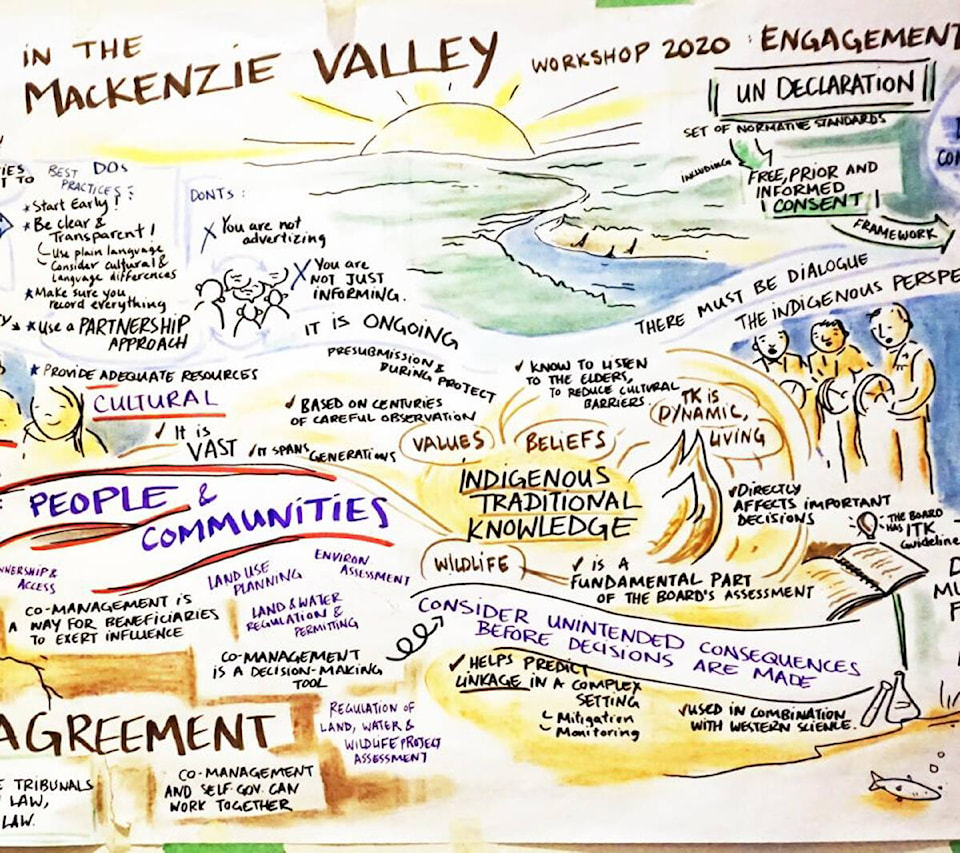While I appreciate Joanne Deneron responding to my column on MVIERB last week I do still believe that more work needs to be done in order to create a more inclusive institutional design structure when assessing and reviewing environmental impacts under the Mackenzie Valley Review Board. Clumping Indigenous communities in with the general public is not conducive of a system that is meant to ensure Indigenous governments have the first say in what type of projects get the go ahead on their asserted territories.
I am of the understanding that there is funding allocated to the Indigenous government regions for one designated employee in each First Nation across the NWT with the sole purpose of reviewing proposals submitted to and forwarded by MVERIB. It’s important to recognize that it is difficult for just one employee to review all incoming documents and sort through potential heaps of paperwork placing them in order of importance then having the task of forwarding those documents on to the Chief and Council for them to make a timely decision when they are already at full capacity with many issues on their agendas all of them of high priority with most Chief and Council meeting only once a month. In my experience with being on council in the past for my own First Nation, I noticed that there was a significant issue with projects taking place on the basis of silence meaning that if there was no response to a proposal it was taken as a “yes” to go ahead with the next phase of a proposed project which is not the case at all.
In fact, silence should be taken as a no if anything. Its these types of capacity issues in communities that are at risk of being made further vulnerable. I would hope that project proponents are not taking advantage of time constraints and the lack of human resource capacity in small communities thus making the process of inclusion and methods of appropriate consultation even weaker than it already is.
The following is not about the impact of project proposals, but it is an example that comes to mind that falls in line with the scope of decision making where the GNWT took the initiative to go ahead with a plan without first seeking feedback from Indigenous governments when they first put out the recreational land lease strategy some years ago. I was appalled to see that they did not first take into consideration the First Nations’ whose territories would be utilized for such leases deemed as “temporary structures”.
Giving out leases to non-Indigenous peoples and those not from the territory, on Indigenous asserted lands without first gaining the approval of the nation’s especially when those nations may have still been under land negotiations was inconceivable. It was a wonder to me why the GNWT was proposing to develop an application process for just about anyone to plop down a moveable structure on a plot of land. I know that I myself had put a canvas tent in an area that was designated as an assertion of my treaty right but that was my right. Other than maybe setting up a fishing hut, no one has the right to infringe on Indigenous lands without permission.
This type of leasing opportunity being made easily accessible seemed all too omniscient of going back to the olden days of staking land claims up for grabs by settlers. It’s not hard to foresee that most of these so-called temporary structures could quite easily be turned into permanent dwellings especially with the ongoing issues of squatters in the territory, so much so that the Yellowknives Dene have since begun to take it upon themselves to go around and put up notices on unregistered cabins.
Don’t get me wrong, I’m all for people going out and enjoying the land but having a recreational land lease is a scenario where First Nations are once again not privy to having a say on what occurs in their backyard.

